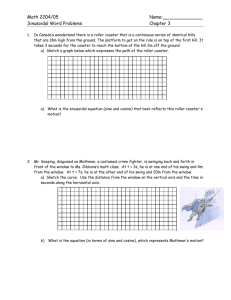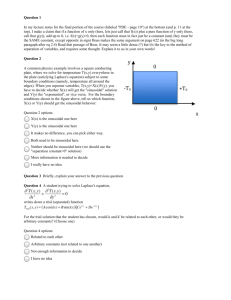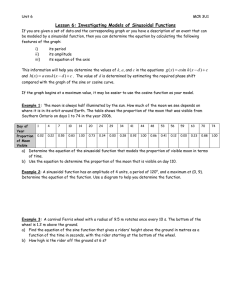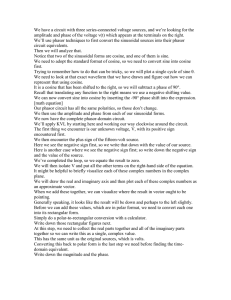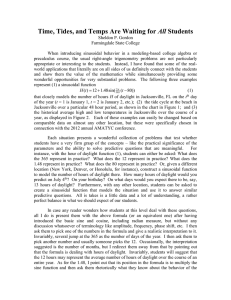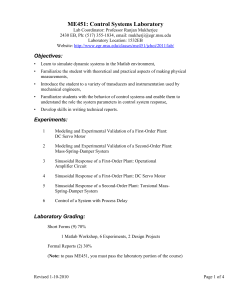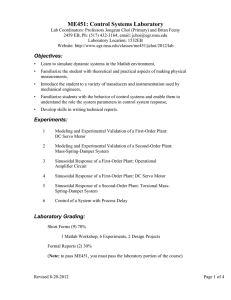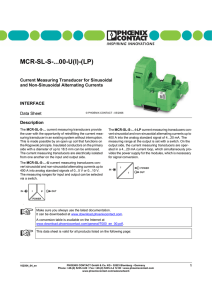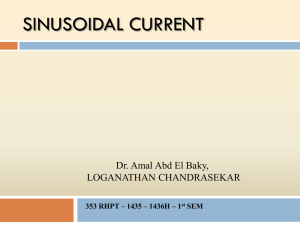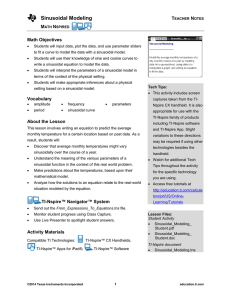SOLVING PROBLEMS USING SINUSOIDAL FUNCTIONS (Real World Applications) PART A ~ INTRODUCTION
advertisement
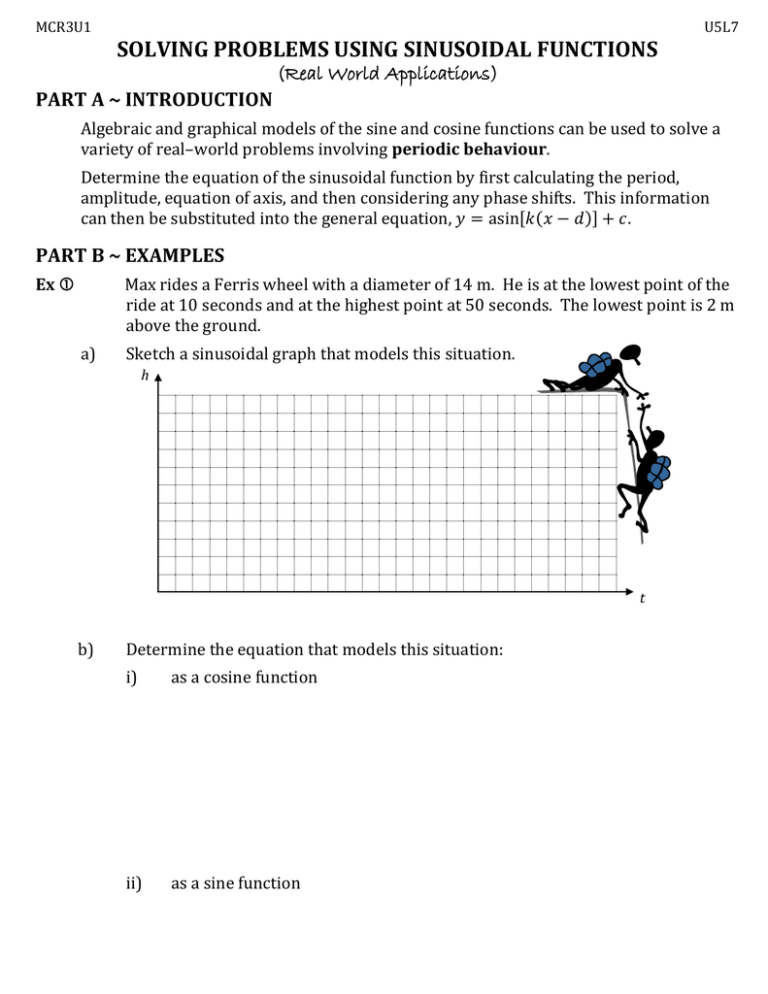
MCR3U1 U5L7 SOLVING PROBLEMS USING SINUSOIDAL FUNCTIONS (Real World Applications) PART A ~ INTRODUCTION Algebraic and graphical models of the sine and cosine functions can be used to solve a variety of real–world problems involving periodic behaviour. Determine the equation of the sinusoidal function by first calculating the period, amplitude, equation of axis, and then considering any phase shifts. This information can then be substituted into the general equation, 𝑦 = asin[𝑘(𝑥 − 𝑑)] + 𝑐. PART B ~ EXAMPLES Ex Max rides a Ferris wheel with a diameter of 14 m. He is at the lowest point of the ride at 10 seconds and at the highest point at 50 seconds. The lowest point is 2 m above the ground. a) Sketch a sinusoidal graph that models this situation. h t b) Determine the equation that models this situation: i) as a cosine function ii) as a sine function MCR3U1 U5L7 c) Determine Max’s height above the ground at 125 seconds. d) Determine the first time at which Max is exactly 12 m above the ground. Ex The top of a flagpole sways back and forth in the wind. The top sways 10 cm to the right (+10) and 10 cm to the left (–10) of its resting position and moves back and forth 4 times every second. At t = 0, the pole was at its resting position and then it started moving to the right. a) Determine the equation of a sinusoidal function that describes the distance the top of the pole is from its resting position in terms of time. b) If the wind speed decreases such that the sway of the top of the pole is reduced by 20%, determine the new equation of the sinusoidal function. Assume the period remains the same. HOMEWORK: p.398–400 #1, 2, 5, 6, 8
